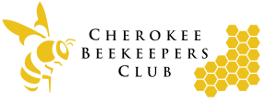 I was reading an old bee magazine which discussed Chickens and Bees. Both were kept in the barn yard to the advantage of both the chickens and the bees. Unless a chicken is range free to roam, it has little to do with honey bees in today’s world. Well maybe the organic people will consider organic honey like they do with free range chicken eggs. But most eggs today are produced in mega chicken ranches. The chickens are kept in cages in big buildings with fans to circulate the air and until Jan. 1, of this year, fed antibiotics by the truck load. If you are a beekeeper you know that the Fed’s are regulating the antibiotics that used to be available in my Farm Supply Store. It appears that I need to go to a veterinarian to get something called a “VCPR or Veterinary Client/Patient Agreement” to treat my bees for foulbrood. Then a trip to the pharmacy to get the medication to treat the hive. I can see the good side of this new regulation but really [a vet and a pharmacy]. I have decided that it won’t be long until the government comes in and tells me what I can and cannot grow in my garden. Thus, I have decided that it is cheaper just to burn the darn hive and bees with any sign of American foulbrood – by the way many states require this rather than medical treatment. A big problem with the antibiotic used on bee hives is the fact they were not working any more. The bacteria became resistant to the antibacterial treatment. I might add that honey could be contaminated by the medication if it is used by a beekeeper during a honey flow.
I was reading an old bee magazine which discussed Chickens and Bees. Both were kept in the barn yard to the advantage of both the chickens and the bees. Unless a chicken is range free to roam, it has little to do with honey bees in today’s world. Well maybe the organic people will consider organic honey like they do with free range chicken eggs. But most eggs today are produced in mega chicken ranches. The chickens are kept in cages in big buildings with fans to circulate the air and until Jan. 1, of this year, fed antibiotics by the truck load. If you are a beekeeper you know that the Fed’s are regulating the antibiotics that used to be available in my Farm Supply Store. It appears that I need to go to a veterinarian to get something called a “VCPR or Veterinary Client/Patient Agreement” to treat my bees for foulbrood. Then a trip to the pharmacy to get the medication to treat the hive. I can see the good side of this new regulation but really [a vet and a pharmacy]. I have decided that it won’t be long until the government comes in and tells me what I can and cannot grow in my garden. Thus, I have decided that it is cheaper just to burn the darn hive and bees with any sign of American foulbrood – by the way many states require this rather than medical treatment. A big problem with the antibiotic used on bee hives is the fact they were not working any more. The bacteria became resistant to the antibacterial treatment. I might add that honey could be contaminated by the medication if it is used by a beekeeper during a honey flow.
The bacteria that causes these foulbrood diseases got smart (rather evolved so that the bacteria that survived a dose of medication were no longer controlled by the medication put into the hive). I go into the market today and everything has become “green”. Organic this and that. Maybe people should be looking at what shows up in an analysis of drinking water. One-third of the country’s 52,000 community drinking water systems were in violation of the Safe Drinking Water Act in 2015. That means 77 million Americans, approximately one-fourth of the population, are drinking dirty water. This is water coming out of a faucet. What about the water our bees are collecting? Inorganic elemental contamination of water supplies may occur from natural deposits, as well as from industrial, agricultural, and household sources. My bees fly about 2 miles I am told from my hives. My neighbor keeps cows and some pigs. He complains all the time to me that my bees are bothering his livestock. Now let me get this straight, how do they bother his livestock? Seems like he says, his hogs will not eat because the bees attack his food trough – he does feed some molasses. And the bees are hanging around the loafing stable and cow pens. Seems they like to gather the water in little puddles where the cows “poop.”
 Oh, my! The bees bringing that water back to the hive in their mouth or honey stomach? Bernice will never eat honey again – she makes me wash my hands before eating (soap and scrub before you eat!) Never mind you that once the bees cross the fence line, I don’t know what spray or chemical they come in with or what farm puddle they found delightful with minerals and such.
Oh, my! The bees bringing that water back to the hive in their mouth or honey stomach? Bernice will never eat honey again – she makes me wash my hands before eating (soap and scrub before you eat!) Never mind you that once the bees cross the fence line, I don’t know what spray or chemical they come in with or what farm puddle they found delightful with minerals and such.
Organic – yeah, real organic.
